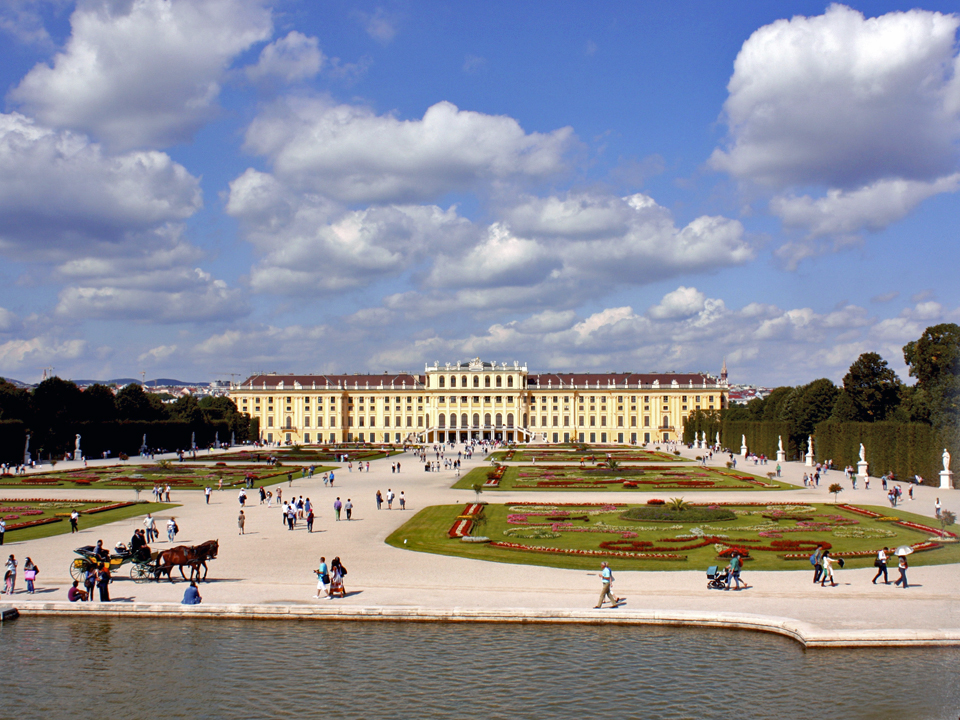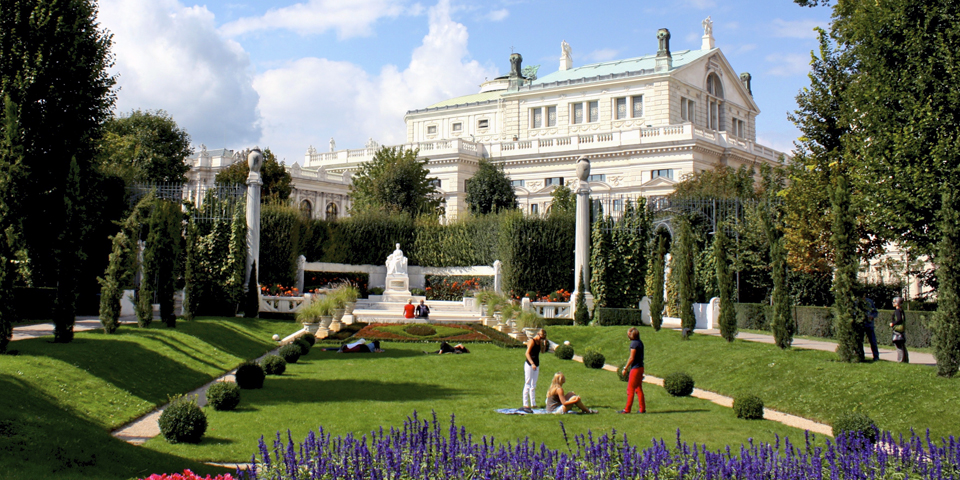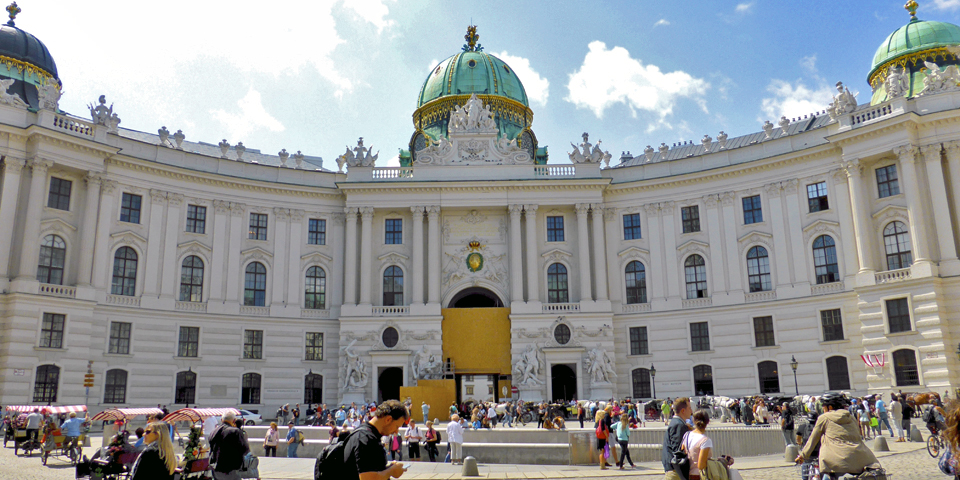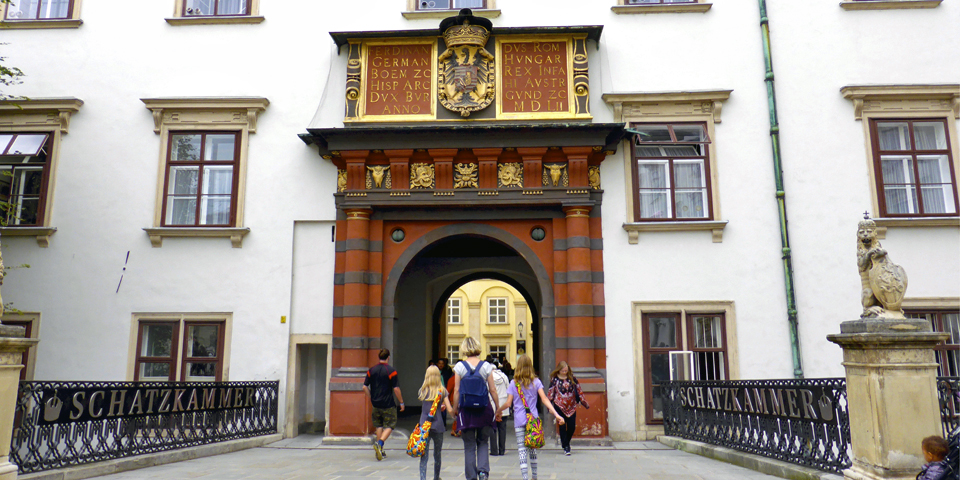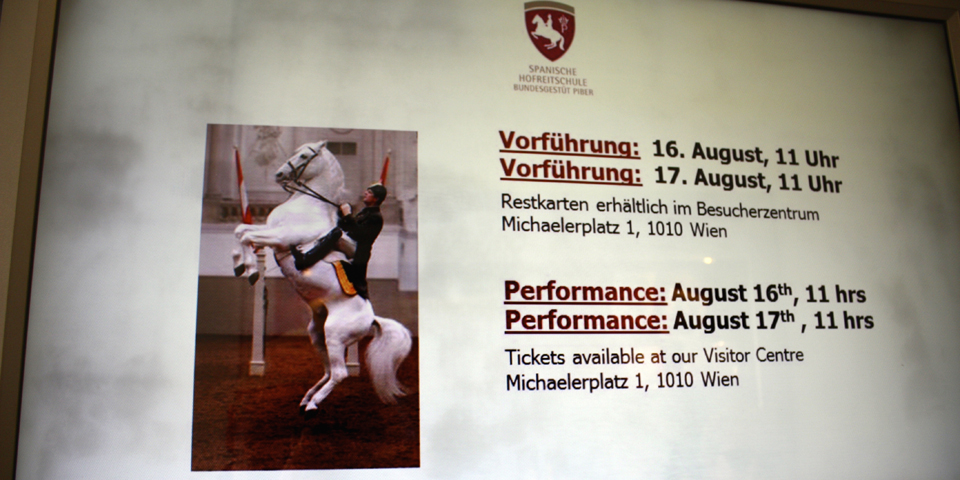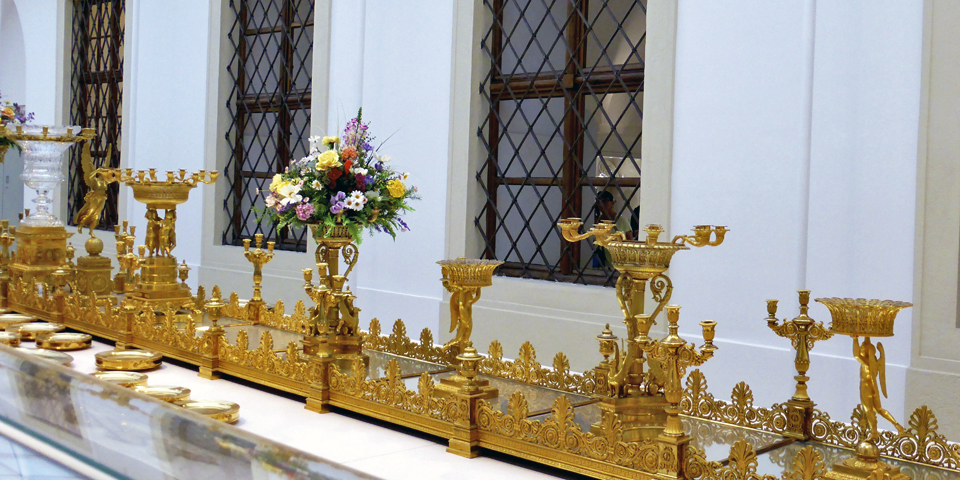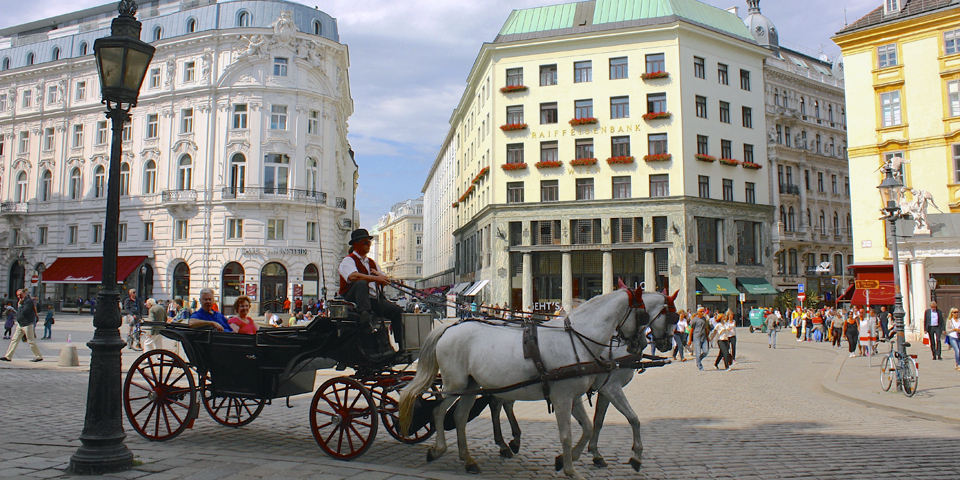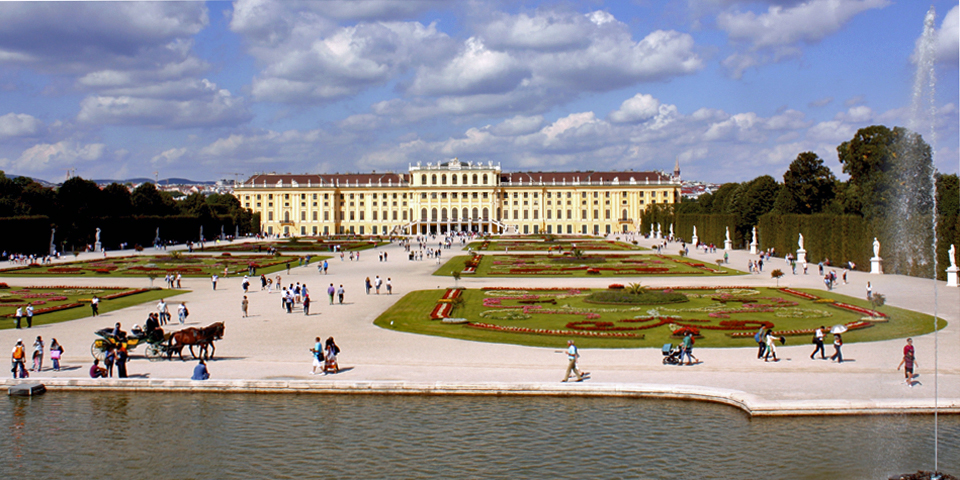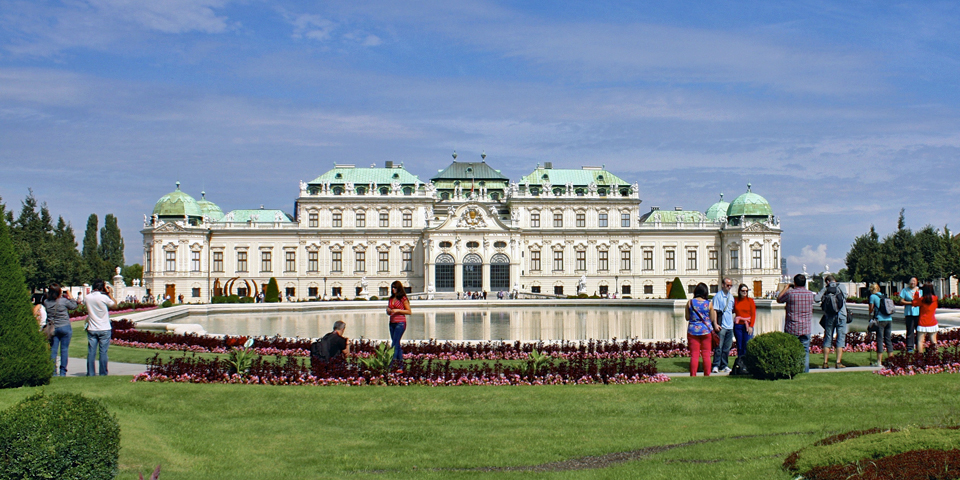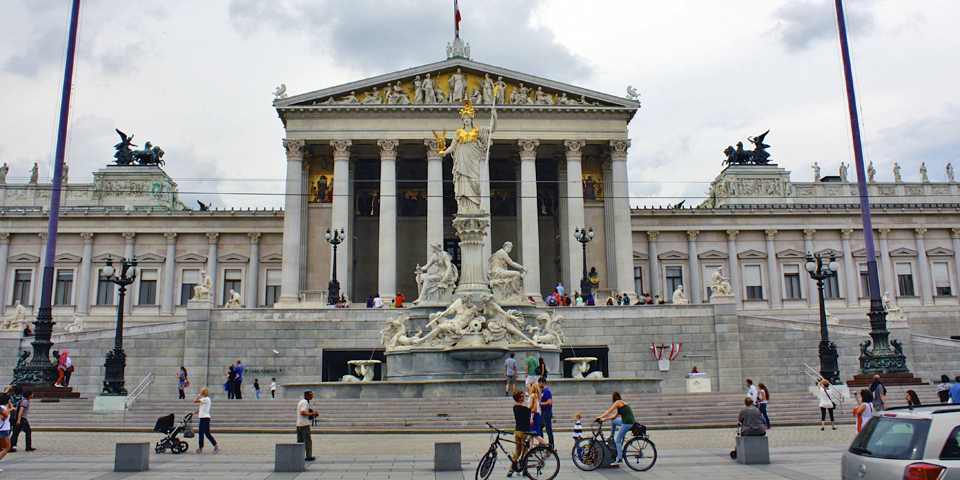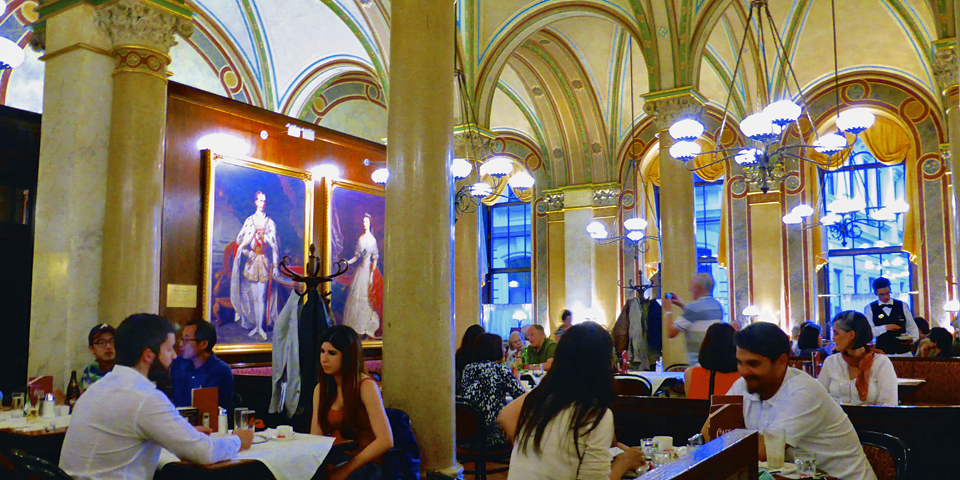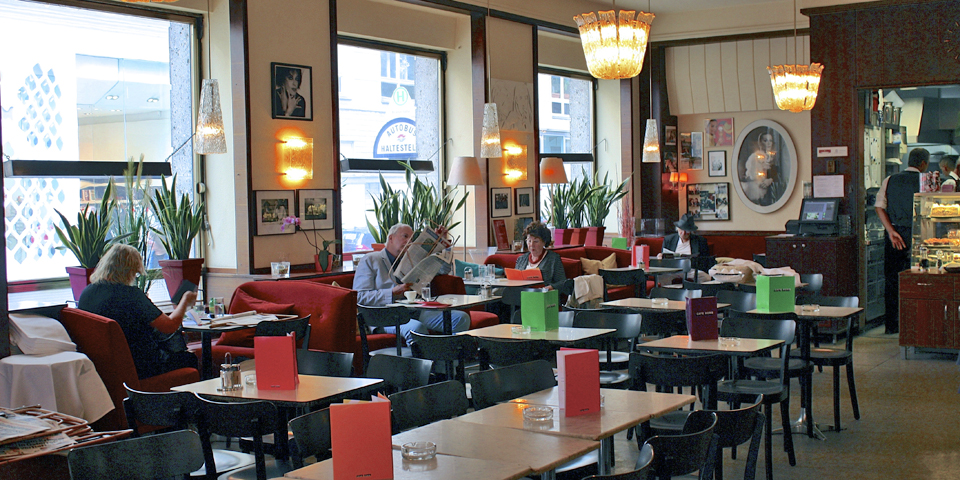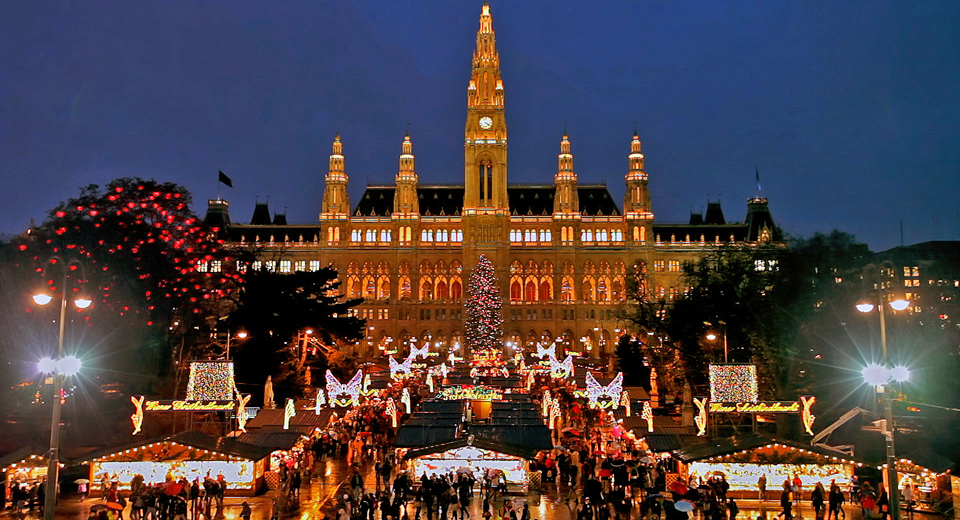The Imperial City: the grandeur of Vienna
Since our Viking River Cruise along the Danube was in one of our favorite parts of Europe, Roger and I decided to extend our time in each of the three countries visited. We arrived two days before our cruise to explore Budapest, returned to Austria and ended our trip in Germany. Sounds of the Blue Danube Waltz danced in our heads as we rode the train to our first post-cruise stop, a return to the grandeur of Vienna.
Austria is one of the most prosperous countries in the European Union, and the quality of life in Vienna, its capital and largest city, consistently ranks #1 globally in the Mercer Quality of Living Rankings. The pedestrian-friendly Imperial City is also one of the most beautiful in the world and 51% of it is green, including magnificent gardens of the emperors.
The Habsburg dynasty reigned from the 13th century as Holy Roman Emperors and Emperors of Austria. Their rule was deemed ordained by God and they controlled the greater part of Europe right up to their defeat in World War I.
Maria Theresa, one of the best known Habsburgs, produced sixteen children and strategically planned their marriages to expand her empire. The dynasty ended with Franz Joseph and his wife, Elisabeth, “Sisi”, who was known for her tiny waist and long elaborately coiffed hair. She gained popularity in the years following her death by an assassination intended for someone else.
What to see
The magnificent architecture, culture, and treasures of the Habsburgs are now a legacy for all to enjoy. The baroque Imperial Palace, Hofburg, includes the offices of the President and government of Austria, extensive art collections, and a public parks. The library’s baroque Ceremonial Room is said to be the most beautiful in the world.
Habsburg collections are featured in the Imperial Treasuries, which is inside the oldest part of the palace, the 13th century Schweizerhof, named for the Swiss Guards once there. Some of the world’s most significant treasures are inside, including the Emperor’s Crown of the Holy Roman Empire (962 A.D.) the Crown of Emperor Rudolf II, a jeweled orb and scepter, and coronation robes. Other riches include the 15th century treasure of the Dukes of Burgundy, an 8th century Holy Lance, a 4th century agate bowl once thought to be the Holy Grail, the 8’ long horn said to be from a unicorn, and the Order of the Golden Fleece, the most-prestigious order of the Middle Ages.
The Vienna Boys’ Choir is one of the oldest boys’ choirs in the world. It has performed solemn mass in Hofburg’s chapel since Maximilian I founded it in 1498. The four groups of touring choirs are named for Austrian composers associated with the choir — Bruckner, Haydn, Mozart and Schubert.
Classical horsemanship of the world-famous Lipizzaner Stallions is performed the palace’s 450 year old Spanish Riding School. Riders in traditional empire uniforms and bicorn hats cultivate the horses’ natural movements in the elegant Renaissance tradition of haute école.
The facts and myths of the free-spirited Bavarian princess who married the Austrian Emperor are depicted at the Sisi Museum. Many of her dresses, jewelry, portraits, and furnishings are on display.
Walk in her footsteps in the Imperial Apartments’ private chambers. The original furnishings include 17th and 18th century Brussels tapestries, Bohemian crystal chandeliers, porcelain tiled stoves, and Louis XV and Empire style furniture. Visit the Audience Hall for meeting with the Emperor, Emperor Franz Joseph’s office, Sisi’s living room, bedroom, and bathroom, and see a profusion of their favored red silk pineapple damask and gold.
The Imperial Silver Collection showcases dining at its finest. Highlights include East Asian porcelain, Vienna court silver, an elegant Grand Vermeil Service for a party of 140 and the nearly 100’ long gilded Milan centerpiece created by Manfredi in 1838.
Emperor Franz Joseph opened the Kunsthistorisches (Art History) Museum in 1891 to house the vast Habsburg art collection. Kunstkammer Vienna was added in 2013, with curiosities that go back to the Middle Ages. It faces its architectural mirror image, the Naturhistorisches (Natural History) Museum, which has gemstones, dinosaur remains, and the world’s largest collection of meteorites.
Hofburg Palace faces Michaelerplatz (Michael’s Plaza) and the elegant shopping street, Kohlmarkt, once the site of court-appointed jewelers. It is lined with prestigious designer stores and many fine jewelry shops.
Demel, at #14 Kohlmarkt, was founded in 1786 and was the Emperor’s official bakery. Even the ever-dieting Sisi could not resist their candied violets. Demel was Vienna’s first coffee shop and the first to offer the Original Sacher Torte. Exceptional cream cakes, strudels, scones, tortes, and chocolates are served in an elegant setting.
The two century construction of Vienna’s icon and popular meeting place, St. Stephen’s Cathedral began when Habsburg Duke Rudolph IV laid the cornerstone in 1359. Colorful roof tiles form the design of the Royal and Imperial double-headed eagle and Vienna’s coat of arms. It was here that Joseph Haydn sang as choir boy, Mozart was married, and the double wedding that brought Hungary and Bohemia into the Habsburg Empire was performed. Climb 343 steps up the 448’ high South Tower for the best view of Vienna.
Schönbrunn Palace, about four miles from Hofburg, was the summer residence of the Hapsburg family. Emperor Franz Joseph and Sisi’s original furnishings are in their apartments and visitors can walk through the state rooms used by Maria Theresa. Schönbrunn was one of the grandest palaces in the Habsburg Empire and is Austria’s most visited site. Learn to make authentic apple strudel in the basement demonstration kitchen at Café Residentz. Access to the palace’s French-style gardens is free.
When Belvedere was built in as a summer residence for Prince Eugene of Savoy it was outside the city gates. This esteemed general and art connoisseur’s home is now an art museum. The collection includes the world’s largest collection by Klimt, including The Kiss, as well as French Impressionist paintings and works from Vienna’s Biedermeier era. The Palace Stables house 150 pieces of sacred medieval art.
Vienna’s lively MuseumsQuartierWien (MQW), with its restaurants and cafés, is one of the largest art and culture complexes in the world. Colorful lounge chairs enliven the plaza that once served as imperial riding stables. The Leopold Museum has the world’s largest collection of Austrian modern art, including works by Gustav Klimt and his protégé, Egon Schiele.
Ring around the city
In 1857 Emperor Franz Joseph ordered the city wall torn down and replaced by a wide road, Ringstrasse. Monumental government buildings, including the State Opera, Art History Museum, Parliament, City Hall, the Votive Church, and the most recent part of the Imperial Palace, were constructed in a fashionable style known as Historicism, that added the latest spin to historic architectural styles.The project was financed by selling land to the wealthy bourgeoisie and nobles who built prestigious mansions on this grand street surrounding this city of royals and aristocrats.
For an overview of the Ringstrasse, take Tram 1 along the nearly three mile loop. The yellow Vienna Ring Tram offers a 25 minute narrated version that departs from Schwedenplatz .
The Viennese coffee house
The coffee house is part of Vienna’s culture, a place meet , relax and read international newspapers and magazines. It’s where artists, writers, scientists, and politicians are known to gather to exchange ideas, compose music, or write a novels.
Superbly brewed coffee is served ceremoniously on a silver tray with spoon across a glass of water. Linger as long as you like.
Try a melange, half espresso, half hot milk, topped with frothed milk. Try strudels filled with apples or cream, Linzer or Sacher torte, for traditional favorites like Weiner (Viennese) Schnitzel, named for Wien, the Austrian name for Vienna.
In 2011, the Viennese coffee house culture became part of the UNESCO National Inventory of Intangible Cultural Heritage.
Literary readings and evening piano music are common at the elegant Café Central. A mannequin of poet Peter Altenberg, who was so frequent a patron that had his mail delivered here, is at the entrance.
The family-run Café Korb, near St. Stephen’s Cathedral, attracts artists and intellectuals and is known for excellent service. It is a local favorite for its Viennese specialties, and many say the warm strudels are the best in town.
Sigmund Freud, Hillary Rodham Clinton and Sir Paul McCartney are among the rich and famous spotted at Café Landtmann, Vienna’s most elegant Café since it opened in 1873. This landmark on the Ringstrasse is the place to see and be seen.
City card
The Vienna Card, available in hotels, the Albertinaplatz tourist information office, airport, and main station offers over 210 discounts at museums and other attractions, theaters, concerts, shops, cafe, restaurants and free use of public transport. It is also available online.
Those staying longer may wish to consider the Sisi ticket.
Where to stay
For a hotel befitting Vienna’s style and grandeur, here are two of our choices, based on location, ambience and amenities, relaxed refinement, 5-star rating, and ease of access to attractions. Both were built as hotels for Vienna’s World Exhibition of 1873, are by the Ringstrasse, and offer fine dining, outstanding breakfast buffets, and luxurious spa facilities.
Contemporary luxury defines the Palais Hansen Kempinski, in the Boerse district and a short stroll from the Danube. Chef Philipp Vogel was awarded a Michelin star and 15 Gault Millau points for the restaurant, Edvard. The top-notch staff is exceedingly helpful and professional, and guests have the convenience of everything in the elegant guest room being controlled by an iPad entertainment system, and the rainfall shower is heavenly.
The Sans Souci, which translates “without worries”, is a chic oasis of 63 rooms and suites in Vienna’s cultural center. The art is from the owner’s collection — originals by Roy Lichtenstein, Joan Miro, Pablo Picasso and more. Experience the creativity that earned La Veranda 14 Gault Millau points with the 4 or 5 course Candlelight Dinner. The spa was named Top in Austria and received Trip Advisor’s 2014 Award of Excellence and Traveller’s Choice Award.
Timing your visit
Vienna’s renowned balls are held in January and February. The Opera, Philharmonic, and Vienna Boy’s Choir do not perform in July and August. Instead, there is a Music Film Festival at City Hall Square.
Many opt to visit during the Advent season’s Christmas Markets, when Vienna comes alive with wooden stalls, roasted chestnuts, Christmas punch, decorated trees, and fairytale scenes. The 150th anniversary of the Ringstrasse will be celebrated in 2015 with special events and exhibits.

